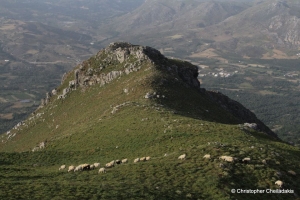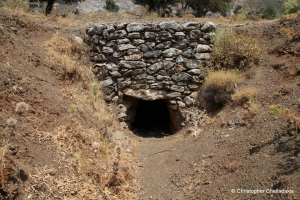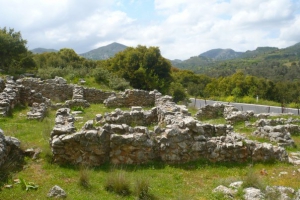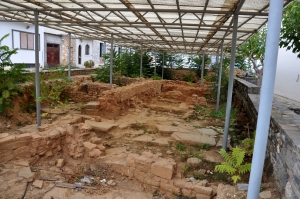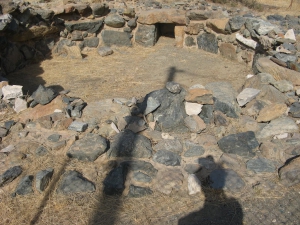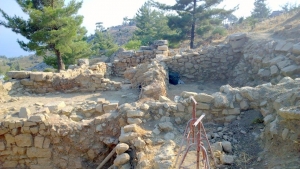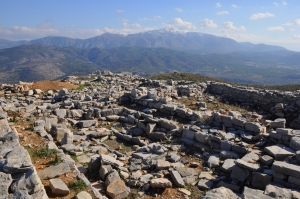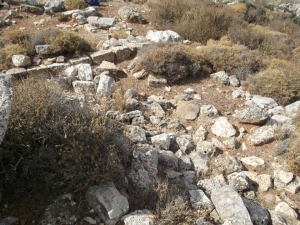Above the village Atsipades of the province St Basil, Rethymno we meet a range of small peaks with the higher being that of Kouroupa. The mountain range of Kouroupa stretches from west to the east separating the villages of the valley of St Basil by the seaside settlements, while defining a different climate. The boundaries of Kouroupa are sharp and are bounded by two long and majestic canyons, Kourtaliotis and Kotsifos. Beyond the peak of Kouroupa there are more smaller peaks, still very beautiful.
The most important of the several tombs found in the surrounding area of Apodoulou is sited at position Sopotakia and has an aisle of 7 meters and a chamber of diameter 3.10 meters. Within the tomb three urns were found (1380-1200 BC).
The Minoan mansion of Sklavokambos was discovered in 1930, while constructing the main road to Anogia and part of it was destroyed by the works. It is a multiple-story building with a main room where a clay ox head was found, along with a Late Minoan IB period style jug and a stone rhyton. The building had at least 17 rooms.
At Kastelli Pediada we meet traces of a settlement that flourished in the Minoan Era and was built since the Neolithic Period. The settlement had developed around a central two-story building of large dimensions, the architectural remains of which are visible today in the square of St. George.
At Gerokambos (Sacred Place) west of Lendas in 1959 three vaulted tombs were found, with the largest (diameter 5.10m) looted and empty. In front of the entrance, a hall was full of people and animal bones, charcoal and cups. In a second tomb figurines, daggers, vases, seals and beads were found.
At position Gaidourofas, at an altitude of 900 meters, near Anatoli village the archaelogists have revealed the traces of an imposing postminoan villa (1600 BC -1450 BC). The building had two floors and the walls are preserved to a height of 2m. There were found big jars and a crypt with pillars (Minoan sanctuary). Among the most important finds was a bronze ax.
At the top of the rocky hill of the Prophet Elijah (Profitis Ilias) near Smari, at an altitude of 590m, there are the ruins of a citadel with a strong defensive wall. The place has panoramic views across the fertile planes of Kasteli and Smari. According to the archaeologist Hadjivallianou, the citadel was the actual site of ancient Lyttos mentioned by Homer. The city was inhabited from 1800 BC till 630 BC, before being abandoned by its inhabitants.
West of the village Tylisos in Malevizi province rises the mount Pirgos with its peak reaching an altitude of 684m. In this steep peak the archaeologist Stylianos Alexiou in 1963 identified one of the most important Minoan Peak Sanctuaries of Central Crete. Religious figurines and stone horns were found, and a rectangular building measuring 13m x 4.50m came to light. It can be reached by walking about 20 minutes from the nearest parking area that is reached by a rural road.











